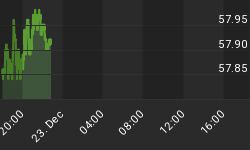Global crude oil production has leveled off at 74 million barrels per day. However, now that economies are recovering, consumption levels are back on the rise and the result will be an inevitable rise in oil prices.
Oil Consumption is Crucial for Economic Growth
Ignoring the rest of the world, the U.S., China and India are expected to increase their daily consumption of oil by almost 10 million barrels per day by 2025. Economic advancement over the last 150 years has been highly correlated with the consumption of oil and other fossil fuels and without this increase in consumption of oil at low prices the world will experience no growth. With such large populations and leverage to energy consumption, however, it is unclear if China and India can live up to their high hopes of leading the world out of the current global economic slump.

What An Increase in Oil Price Means For Global GDP
A $100 increase in the price of oil would cost an additional $3 trillion in direct consumption expenses globally effectively reducing global GDP by 5.1 percent. While some of this wealth might be transferred to oil exporting nations, this is not a zero sum game. If oil shale or deep water drilling were used to replace current low cost supplies than oil producers would be spending nearly $100 in additional productions costs and realizing none of the financial gains to offset the losses from consuming nations.
Most developing nations that are driving global economic growth are highly dependent on energy consumption. Although the U.S., EU, and Japan consume large amounts of energy, these nations have less leverage to the price of oil in relation to their GDP. If the price of oil were to rise by $100, China would suffer from a direct 6 percent hit to their economy, India would suffer from an 8 percent hit to their economy and Japan, as probably the most economically vulnerable nation in the world, would be even more adversely affected.

What Oil Dependency Means
Another important consideration for countries is their foreign dependency on oil. While Russia has a high level of leverage in oil consumption, it is also a net exporter. As a result, Russian oil supplies are relatively secure. The two most vulnerable nations in the world to an oil shock are Japan and South Korea as they import more than 97 and 98 percent of their oil respectively. Both nations are also highly urbanized with very little arable land. These nations would not survive a halt in global oil trade. The EU, China and India are also highly dependent on oil imports.

Why Extent of Unused Arable Land is Important
South and Central American nations including Brazil and Argentina may have the best chances of coming out ahead as they are energy independent, have lower populations than Asia, and the most unused arable land.

Capacity of arable land is a strong indicator of potential for economic prosperity if energy prices spike because the arable land supports farming and food production.
Conclusion:
Now that the U.S. and Europe are also financially insolvent energy consumers the world is turning to nations such as India and China to drive global growth but their large population and leverage to the price of energy create a situation of great risk.
If peak oil is realized within the next five years then growth prospects in India and China will be reduced drastically and the result will be negative global GDP growth and a reduced standard of living for virtually all nations.
















